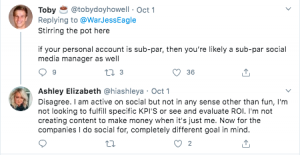Building links and boosting SEO rankings has always been a challenge for SEO professionals. Google doesn’t like many of the practices popular among “the SEO experts”. Most of these practices can lead to a Google penalty these days.
In fact, Google doesn’t recommend any “tactics” to engineer backlinks. For them, the best links are the ones you earn through your visitors in a natural way. It seems easy at the outset, but it’s one of the most difficult tasks. It’s difficult because you need excellent traffic and quality content on your site before you expect your readers to point links to your content. This is a catch-22 situation.
Today, we’ll tell you how to build links and boost your rankings using a wonderful SEO tool known as “Ahrefs”. Ahrefs is quite popular among digital marketing professionals across the world because of its great features.
First, develop your own Linkable Assets.
This is how QuickSprout describes Linkable Assets:

Linkable Assets are the pages on your website with valuable content that you can use to market your website for building natural links. The content should be so awesome that you can use that over and over again.
Now, the next challenge is producing such content, which is not that easy and you need both the budget and the resources to create that.
Your linkable asset should be in the form of a blog or a news site, where people from your industry can find useful and interesting content classified according to different categories.
This content should be so compelling that people love to point links to it.
There are no shortcuts and secret tactics to build natural backlinks.
Unfortunately, many small businesses and SEO agencies with a lack of expertise end up building backlinks using foul methods. But, the engineers at Google’s spam team are so smart that they will never allow such manipulative tactics to be used to win search engine rankings. If you spam, they will throw your site back to where it came from.

How to use Ahrefs’ SEO tools for link-building?
Ahrefs can actually help you create the best linkable asset for you.
Let’s delve into the process to know how we can use Ahrefs to attain this objective:
Govind Agarwal, an SEO expert from Mumbai has identified the following three ways you can use Ahrefs for link-building, in his post, “Make Use of Ahrefs to Build Links and Boost SEO Ranking”:
A. Conduct Research on your Niche Market for Keywords and Backlinks
B. Create your Own Linkable Assets using these insights
C. Sourcing Linkerati to get better links
Using Ahrefs’ Content Explorer tool
Ahrefs’ Content Explorer tool will help you to research the keywords that you should focus upon to target your niche. If you’re not an expert at finding the right keywords, you can visit the linkable assets of your competition. Ahrefs’ Site Explorer tool can help you in this.
All you need to do is to enter the domain name of your competitor and begin your search using the following steps:
Hit the search button when you enter the domain of your competitor
Look at the top left corner and click “Top Pages” section
On the next page hit “Backlinks” tab
The result will display the best pages on this website in terms of backlinks
Create your Own Linkable Assets
Now developing your linkable assets becomes easier.
You can follow these steps in order to create your linkable assets:
Identify the content that’s popular in your niche
Use better design and bring in more value
Create superior content (by adding more insights, bigger lists, more links, more examples, and more case studies)
If you can’t do it alone, hire a team or outsource some of the tasks

Sourcing Linkerati
The best way to get links is to approach the people, who are already linking to content similar to your asset.

Again the process would be:
Go to Ahrefs’ Site Explorer
Enter the URL of your competitor’s linkable asset
The result will provide you the source contacts
Using Ahrefs Alerts
Ahrefs’ alerts are very popular with digital marketers. You can use it for competitive analysis before you run your outreach campaigns. You can subscribe to these alerts for the best phrases that are relevant to your business. Ahrefs alerts provide you the feed as soon as some new content/post appears on the web that is related to your phrase or keyword.
It will also notify you whenever your competitor receives or loses some backlink. In both the cases, you can try to get a link from that source.

[Courtesy: Quicksprout.com]
You can also use Ahrefs to analyze and monitor your backlink profile. It will help you to snoop on your business rivals.
Search Appearance Optimization- Is it the future of SEO?
When I researched the top SEO trends that are influencing the search engine rankings of websites in 2017, content and user experience came on top. These are the two major trends almost all prominent bloggers and agencies agree on as far as rankings in the year 2017 are concerned.
It means that the future of SEO is going to be different from what it’s today.
If you continue doing the same old things, soon you’ll realize that you’re lagging behind in the race.
In 2015, with Google’s announcement of a mobile-friendly algorithm, an immediate impact was seen in the form of a noticeable traffic loss for the websites that were not optimized for mobile phones.
Soon, companies started talking about the need for improvement in the entire mobile content ecosystem. Open source initiatives such as the Accelerated Mobile Pages project were launched.
Beware, Google is doing similar water-testing at present and some big changes are expected soon.
Search appearance
Search appearance is everything that is displayed in the Google search results. So, products, events, recipes, reviews, software applications, articles and local business information, etc. everything can be a part of search appearance.
Let’s discuss user experience and content specifically with respect to search appearance.
Well, when we untangle the complexity linked with user experience, we come across several pointers. We will begin with annotation of content for a better understanding of your business by Google.
Appearance on new search channels
“Structured data markup” is one such thing we use for content annotation for machine understanding. So, when you use this markup your data can be indexed in a better way and appear prominently for relevant search queries.
This markup also helps in boosting your search visibility, on the new search channels such as voice answers, maps, and Google Now.
Voice Answers
Voice Answers is a personal assistant app, which can answer your queries and assist you with different tasks to be performed on the web, and it is controlled by voice. You can control your web world through Voice Answers and give instructions for tasks such as setting up reminders, sending an email, and getting something translated into another language.
Google Now
Google Now is also an intelligent personal assistant. It comes with the Google Search mobile application. You can use it to get your questions answered, make recommendations and issue instructions to a host of web services.
Both these platforms are being used widely apart from the normal search query field of Google.com and this trend is bound to grow further in future.
Using “Structured data markup” and schema.org, you can make your site appear in the search results for these virtual personal assistants as well.
Accelerated Mobile Pages (AMP)
Now move to another aspect of user experience – faster mobile pages or the Accelerated Mobile Pages (AMP), which is an open source initiative that will help publish mobile content that will download faster.
Local Business Cards
It’s reported that Google is experimenting with a new search feature – local business cards. The official Google name for the project is still unavailable but the idea is to make your site appear on top of search results pages with local business keywords.
Schema.org
Schema.org has a vocabulary that is compatible with many different encodings such as JSON-LD, RDFa, and Microdata. It is used by nearly 10 million websites. Furthermore, these terms are being used by big names such as Microsoft, Google, and Yandex for their applications to support extensible and rich experiences.

As you know, you can leverage schema markup to make search engines understand your website’s content in a better way enhancing its visibility. In fact, developers around the world are using structured data to create signals that are easily understood by search engines.
It impacts your rankings. Google officials have also speculated about the inclusion of structured data markup as a ranking factor.
One more problem faced by the business owners and SEO professionals is that their properties appearing in the organic searches disappear fast. So, we need to make the sites more Google friendly with local business cards (another feature of Google).
Place Actions
Through Place Actions, you can fix appointments, place orders, and complete reservations, etc.

This is also under experimentation but will decide the future of searches as Google wants to be “your best friend on the planet” and help you with everything technology is capable of.
Knowledge panel card
When you search for a business on Google, a highly visible “Knowledge Panel” card appears on the right. It’s not just an image, but a combination of many things – all of which are directed to provide relevant information about the business without having to open the home page of the website.
You can see Place Actions inside the card. It also offers deep linking to relevant landing pages directly from the card.

JSON for Linking Data
JSON’s mission statement is: “Data is messy and disconnected. JSON-LD (JavaScript Object Notation (JSON) for Linked Data (-LD) organizes and connects it, creating a better Web”. [Courtesy: http://json-ld.org/]

Google has expressed its commitment to support JSON-LD in future, but has also made this clear:

[Courtesy: http://www.seoskeptic.com/]
Using AMP articles and future mobile rich snippets
Google has recently released AMP articles in the content carousel. To improve user experience, search engines are also putting emphasis on mobile rich snippets. So, you can click the call button directly and go to deep links through rich snippets.
Anything which improves user experience is also good for SEO. Visually enhanced and user-friendly sites are at a greater advantage and they are more likely to appear in the SERPs. So, businesses should focus on improving their expertise, reliability, authority and technical efficiency. To become better at SEO, one should have some coding skills as well, so that they can add schema.org markups etc.
Digital & Social Articles on Business 2 Community(123)









